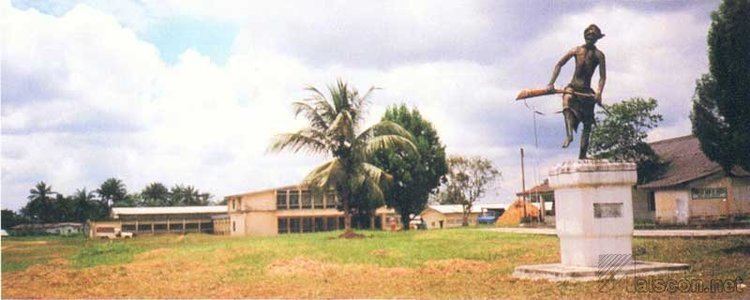By Bassey Asuquo
Uta Ewa Beach is a beautiful beach front located in Ikot Abasi Local Government Area of Akwa Ibom State. It is a site to behold any time, any day as far as tourism is concerned.
The estuary is located within Latitude 4o32’ to 4o52’N and Longitude 7o25’ to 7o45’E and lies on the western bank of Eniong creek about 12 km from the mouth of Imo River.
Characteristically, the area is typical of an estuarine tidal water zone with freshwater input from Imo River with extensive mangrove swamps and intertidal mud flats.
The estuary is bounded by thick mangrove forest dominated by Rhizophora species and interspersed by Nipa palms).
According to research, the estuary has two stations. The first station is located upstream of the Uta Ewa estuary with human settlement and local market on the left flank of the shoreline. Vegetation is sparse with mainly mangrove and Nipa palm. This station is very shallow and the bottom when exposed at low tide is made of fine sand.
Human activities include logging of the mangrove, sand dredging, washing of boats, canoes and fishing nets, as well as swimming.
The second station is about two kilometres away from the first station, downstream of the estuary with no human settlement. On the shorelines are thick vegetation of mangrove and NIPA palm. The station is deep and at low tide, the greater part of the bottom mud flat is exposed.
Human activities in this station are minimal, with mainly fishing activity on the high.
Mr. Mfon Akan, an indigene of Ikot Abasi said, “Uta Ewa beach has two stations. Station one is in the upstream of the Uta Ewa estuary, while station two is about two kilometres from station one. People are living in station one and there is a local market within but there is no human settlement in station two.
Station one is very shallow. And has much sand. This is seen when there is low tide where the bottom of the water is exposed. You can find such activities like, logging of woods, dredging of sand, washing of boats, canoes and fishing nets, and swimming in station one. Mainly fishing activity takes place in station two”
Uta Ewa estuary is rich with a wide variety of shellfish species of ecological and economical importance.
According to findings, Shell fishes of the Decapoda: Crustacea are of great commercial importance in Nigeria territorial waters and the exploitation has been on the increase due to demand for protein sources for human consumption as well as source of income for coastal towns and villages of the Niger Delta environment.
Nigeria’s shrimp fisheries, both industrial and artisanal, are a major source of. both direct and indirect employment. Decapod shellfish comprise crabs, prawns and shrimps. Thus several shellfish species from the three groups: crabs, prawns and shrimps.
Uta Ewa estuary is known for its high productivity and rich biodiversity, including a wide variety of finfish and shellfish species.
The beach is attractive to tourists who visit there to enjoy the works and wonders of nature, especially when the water is on a low tide, where the water is dry and one can walk on a dry ground.
It is also a lovely experience when one is opportune to see the water returning to a high tide where the river becomes full again. It is an experience tourists must not miss at Uta Ewa Beach.
Mr. Ifreke Ukpong from Mkpat Enin Local Government Area said, ”Uta Ewa Beach is an attractive site for tourists’ delight. The work of nature in that place is superb. The periods of low tide and high tide will always marvel a tourist.
”In low tide, the water will dry up and in the high tide, the water will return. This is good enough for tourism.”

